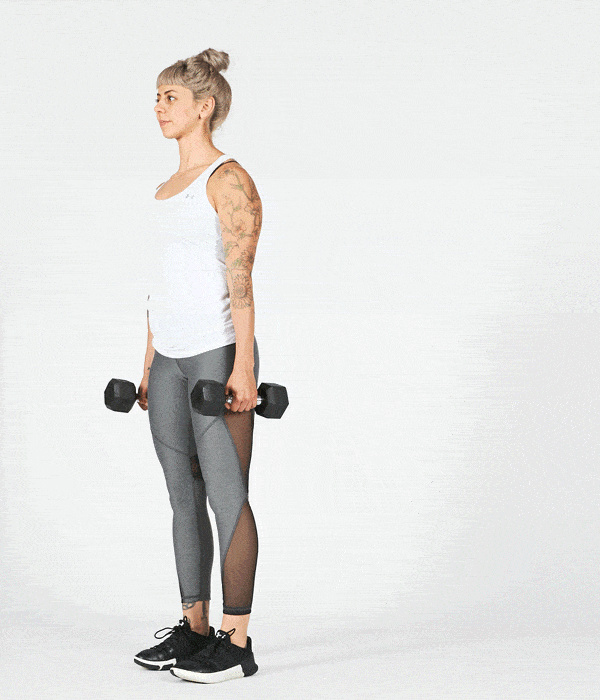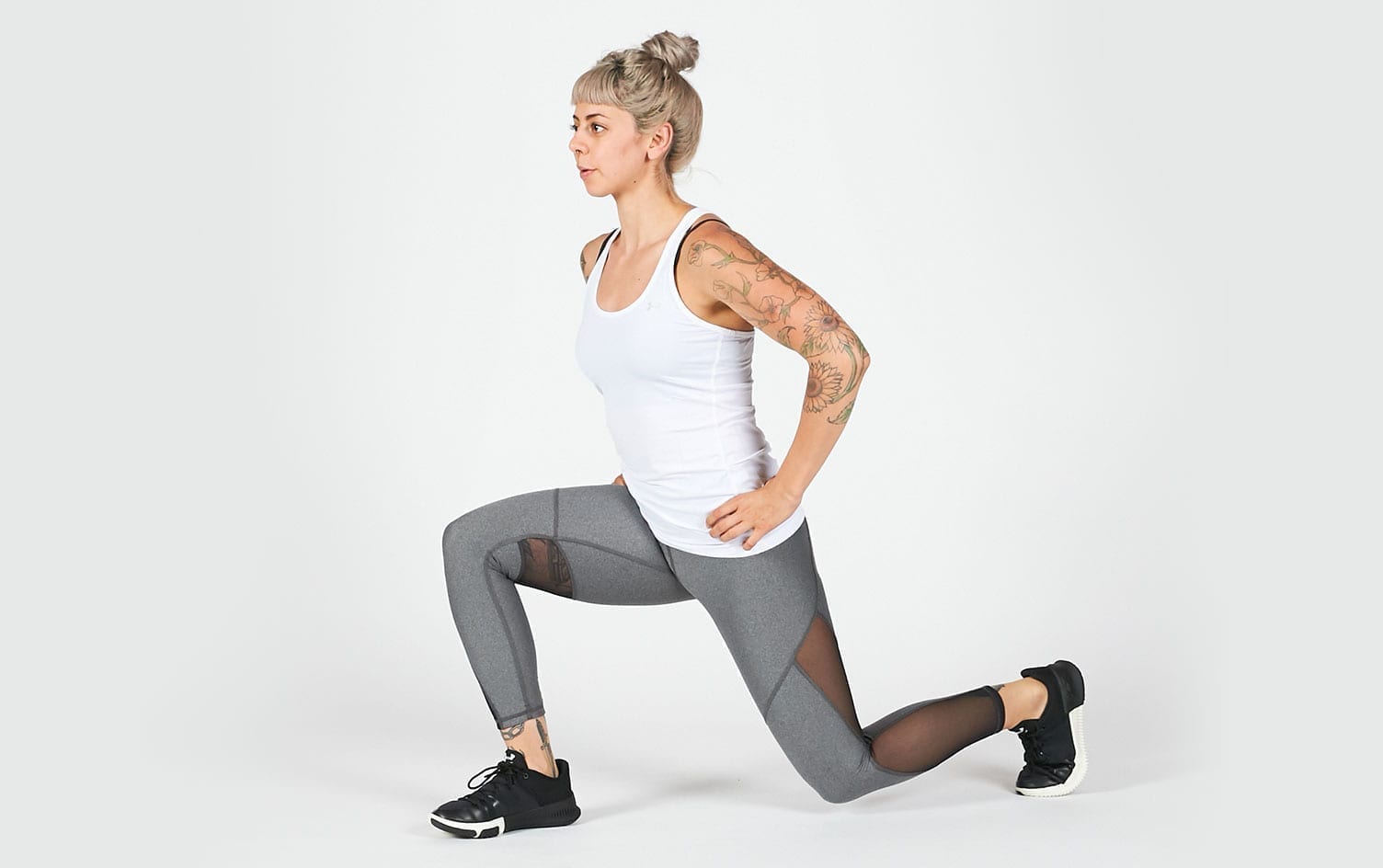Forward and reverse lunges may simply look like mirror images of the same movement, but there’s more to these leg-strengthening exercises than meets the eye.
Though forward and reverse lunges have many things in common, they also offer unique benefits. Here’s what you need to know:
Forward and reverse lunges share a few key features.
First, both lunge variations target the glutes, legs (e.g., hamstrings, quads and calves) and abdominal muscles, according to Marc Santa Maria, national director of group fitness for Crunch Fitness. However, each variation works these muscles in slightly different ways, and favors certain muscles over others (more on this later).
In addition, both variations lengthen, or extend one hip while the other hip is bent, or in flexion. Adding exercises that incorporate hip extension, like forward and reverse lunges, is a great way to balance out all the hip flexion (i.e., sitting) many of us do in our daily lives, according to Samson Frederick, CorePower Yoga master trainer. “To counteract sitting, layer in forward and reverse lunges, which move your hips into the opposite place of sitting in a chair,” he says.
Finally, forward and reverse lunges (or any lunge variation, really) are unilateral exercises, which means they work each leg separately. Focusing on one limb at a time helps build single-leg strength, as well as overall balance, stability and coordination. These are all important for daily life and athletic endeavors alike.
READ MORE > SCIENCE SAYS: ENDURANCE EXERCISE HELPS COUNTERACT SITTING
THE DIFFERENCES
While forward and reverse lunges both work the glutes, legs and abs, each emphasizes different leg muscles. Reverse lunges hone in on the hamstrings (back of thighs) and glute max (your meatiest glute muscle), whereas forward lunges focus more on the quads (front of thighs).
Forward lunges will also likely challenge your core more than reverse lunges because stepping forward causes instability when the back heel comes off the ground, Santa Maria says. As a result, your core has to fire overtime to stabilize.
Forward lunges may also feel more natural for some people than reverse lunges: “[Forward] lunges have the advantage of making us move in a manner we are used to — we walk forward,” Santa Maria says.
However, the instability of forward lunges may make them less accessible or comfortable for many people. In particular, instability means many people struggle to perform forward lunges correctly, which often results in knee pain. “Moving forward, folks often let the front knee track past the ankle and even past the toes, putting extra pressure on the knee,” Santa Maria says.
Meanwhile, reverse lunges tend to be a gentler, more accessible variation. “In strength classes I teach, I generally use reverse lunges more because it helps participants protect their knees in an easier way,” Santa Maria says. “The reverse lunge [keeps] the front foot super stable, where the whole foot stays on the ground, and it allows us to control the placement of the knee over the ankle, protecting it.”
That said, forward and reverse lunges offer unique benefits. It’s worth learning how to perform each variation correctly, so you can incorporate both into your strength routine.

To protect your knees and maximize the effectiveness of each lunge variation, Frederick offers these form tips:
- Keep your knees stacked on top of your ankles.
- Try to keep your weight in the heel of your front or foundational foot.
- Allow your toes to point in a natural direction, and make sure your knees point in the same direction.
If you experience discomfort or pain, decrease your range of motion.
For forward lunges, in particular, make sure you step far enough forward to be able to stack your front knee over your front ankle. Many people make the mistake of not stepping far enough, which causes them to push their knee over their front ankle, creating a pull on the front leg’s knee cap, Frederick says.
Check out “Workout Routines” in the app to discover and log a wide variety of routines, or build your own routine with exercises that fit your goals.




